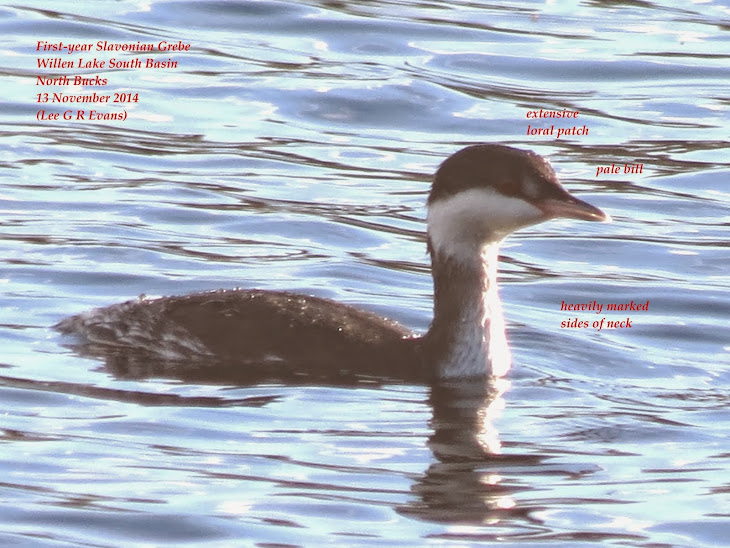Tuesday 14 April 2009
THIRD BLACK REDSTART of year for CMK
Following a phone call from Simon Nichols, I went up to CMK yesterday, and saw the BLACK REDSTART at c1820. I was able to confirm his suspicions that this was in fact a THIRD bird, different from the other two. Having checked my rather limited references, I can summarize the three birds thus: Bird 1 - a scruffy "female-type", which I thought was a probably 1st-su male, due to a darker, blacker tinge to the face and the upper breast, contrasting with the slightly browner mantle and lower belly; wings blackish with pale buff edges to the tertials forming a diffuse, but visible wing-panel. Bird 2 - a fairly standard female, with again blackish wings (no wing panel) contrasting with the sooty grey (i.e no hint of black) concolorous upperparts. Bird 3 - a splendid full adult male in almost every respect, with dark grey upperparts, almost black around the face, throat and upper belly, that lovely vivid red tail, but with dark brown wings, which provided a prominent contrast with the body. There was no white wing panel, or indeed any hint of white edges to the secondaries and tertials, as one would expect of adult males. Now, Black Redstarts are in fresh plumage in autumn, and acquire their spring finery through abrasion rather than moult. But if that's the case, then surely there's an abberation with the adult male, as the wing feathers showed no sign of maturity, in contrast to the rest of the bird.I'm probably missing something rather obvious, but comments welcome please! (Rob Hill)

